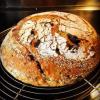March 22, 2016 - 6:43pm

Understanding pastry dough
I've made flaky, buttery pie crusts over the years, but I am always on the look out for a way to reduce the butter and still produce a manageable, tender crust. I've seen entries calling for the addition of vodka (CI), vinegar, an egg, and everything from lard to vegetable oil to sour cream to quark. Can anyone guide me to the right resource on understanding what the ideal ratio is of flour to fat to water (recognizing that there may be water trapped in some of the fat) and how much leeway room there is for a tender crust? Recipes or thoughts from your experience would be welcomed; help in understanding the ratios and their acceptable ranges would be preferred. Thanks again.


Has much of the information you seek. You can also google flour fat ratios in pastry for a lot additional resources.
Happy researching!
Paul
Thanks for the reference. The problem I've found so far is what appears to be an oversimplification, most commonly seen with the 3-2-1 ratio of flour to fat to water. It turns out that the "fat" most commonly used is butter (which contains water). If it was as simple as 3-2-1 then I'd think I could replace the butter with an equivalent of canola oil instead, but I'd get a very different result. The issue of pastry interests me because it seems everywhere else there has been a great deal of work explaining the science behind the recipes (certainly in bread baking and the extensive treatment for savory in books like The Food Lab/Serious Eats). I'm still looking for similar work for the pastry dough. Will keep you posted.
Wayne Gisslen has a discussion of pie doughs in Professional Baking, he discusses 3-2-1 and how he has modified his pie-dough formulas from that ratio. I don't think he's a scientist, rather a pastry chef, but the whole field is infused with science.
Thanks for that. At some point, I am going to borrow that book at the library and read more.
I had a similar idea to yours, that since margarine has water in it (I'm milk-protein allergic, so must use whey-free margarines and avoid dairy and butter), that should supply the water for the pie doughs. I took Gisslen's formulas (both of them), and used a combination of butter-flavored shortening and margarine to match his fat and water percents. This meant that there was no added water (all the "margarines" I currently have on hand have significantly more water than butter). The crusts are very good, but they're not flaky as expected. I would call them crumbly and tender. I think the water is critical to activate the glutenin/gliadin and glue the endosperm together into flakes, so those flakes are kept separated from each other by the fat, and later fried during bake. With butter or margarine, the water is in emulsion with the fat, and won't create the flakes, unless you continue to add ice water, which increases the total water and makes the crust tougher.
It's difficult to explain the result in words, I'd suggest just trying it to see the result. The water and fat numbers are very easy to work with at a baker's percent level with the assistance of a spreadsheet, to adjust the formula for the water and fat contents in either butter or margarine versus the 100% fat in shortening. However long it takes you to crunch the numbers then make the crusts and filling, bake, and cool is how much time you'll spend to know how it turns out without the limitation of wordy descriptions. Myself, I love it this way, but if you're baking for folks who expect a typical flaky crust, they will say it is "different." Good, but different. I know because I've asked.
Pie dough made this way, because it doesn't have enough "free" water to stick together, is very difficult to move and place on the pie dish (adding water allows the dough to be "handled"). I use a towel on a sheet of metal, and both pick it up from the rolling surface by sliding the towel on the sheet, and place it on top of the pie with a reverse action. I find it helpful to have another person to assist, particularly with placing the top crust.
I think one of the reasons you use butter, lard or shortening rather than oil is that those fats are solid at room temperature. You want little slivers of cold fat in the pastry so they will melt in the oven and create the flakes in the pastry. Oil pastry tends to be crumbly rather than flaky.